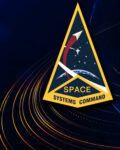Firefly Aerospace’s latest attempt to demonstrate its Alpha rocket’s viability ended in failure during a critical U.S. Space Force mission. The mishap underscores persistent reliability issues with the company’s small satellite launcher and casts doubt on Firefly’s role in the Pentagon’s responsive space strategy.
Alpha Rocket’s Fourth Flight Ends in Partial Failure
On September 5, 2025, Firefly Aerospace launched its Alpha rocket from Vandenberg Space Force Base as part of the U.S. Space Force’s VICTUS NOX program—a rapid-response mission designed to test the military’s ability to deploy satellites on short notice. While liftoff and first-stage performance appeared nominal, telemetry confirmed that the rocket failed to deliver its payload into a stable orbit due to an upper-stage anomaly.
The mission was expected to place a Millennium Space Systems-built satellite into low Earth orbit (LEO) within 24 hours of receiving final orders—a key tenet of the Tactically Responsive Space (TacRS) doctrine. However, post-launch data indicated that although separation occurred and second-stage ignition was achieved, an issue with attitude control or propulsion led to orbital insertion failure. The payload reentered Earth’s atmosphere shortly after launch.
Implications for Tactically Responsive Launch Programs
The VICTUS NOX mission was intended as a proof-of-concept for rapid space asset deployment in response to emerging threats or satellite losses—capabilities increasingly prioritized by U.S. military planners amid growing anti-satellite capabilities from adversaries like China and Russia. Firefly had previously succeeded with VICTUS NOX I in September 2023 by launching within 27 hours of notice and delivering its payload successfully.
This latest failure undermines confidence in Firefly’s ability to serve as a reliable TacRS provider under operational conditions. The U.S. Space Force has not yet commented on whether this will affect future contract awards or shift preference toward competitors like Rocket Lab or ABL Space Systems—both of which are also developing responsive launch solutions.
Technical Challenges Persist for Alpha Platform
This marks the fourth orbital attempt for Alpha since its debut flight in September 2021. Of those four missions:
- Flight 1 (Sep 2021): Vehicle lost due to engine shutdown caused by electrical issue.
- Flight 2 (Oct 2022): Reached orbit successfully; carried educational payloads under NASA’s ELaNa initiative.
- Flight 3 (Sep 2023): Successful TacRS demonstration under VICTUS NOX I.
- Flight 4 (Sep 2025): Failed orbital insertion during VICTUS NOX II.
The latest anomaly appears linked to upper-stage performance—either propulsion system malfunction or guidance/control error. Firefly has not released detailed telemetry but confirmed an “off-nominal” event following stage separation. Independent analysts suggest possible issues with roll control thrusters or second-stage engine thrust vectoring based on trajectory deviations seen during livestream footage.
A Crowded Field of Small Launch Providers
The market for small-to-medium class orbital launch vehicles is increasingly competitive. Companies like Rocket Lab (Electron), ABL Space Systems (RS1), Relativity Space (Terran R), and even established players like Northrop Grumman are vying for Pentagon contracts under programs such as OSP-4 and TacRS-3A/B/C frameworks.
Firefly’s advantage lies in its vertically integrated manufacturing model and relatively high payload capacity (~1 metric ton to LEO) compared to other small-lift providers. However, reliability remains paramount—especially when national security payloads are involved. The recent setback may prompt DoD stakeholders to reevaluate risk tolerance thresholds across vendors participating in responsive space initiatives.
Next Steps for Firefly Aerospace
The company has stated it is working closely with government partners on root cause analysis and corrective actions ahead of future launches. CEO Bill Weber emphasized commitment to transparency and rapid iteration cycles—a necessity given the firm’s ambitions not only for Alpha but also upcoming platforms like Beta (medium-lift) and Elytra (space tug).
If Firefly can isolate the fault quickly and demonstrate resolution through ground testing or suborbital validation flights, it may yet retain credibility within defense circles. However, repeated failures risk relegating it behind more consistent performers unless mitigated soon.
A Broader Strategic Context
The U.S.’s push toward resilient space architectures—including proliferated LEO constellations and fast-reaction launch capabilities—is driven by mounting concerns over contested space environments. As adversaries develop co-orbital ASAT systems and jamming/spoofing capabilities targeting ISR satellites, being able to reconstitute assets within days becomes vital for maintaining strategic deterrence and operational continuity.
This places immense pressure on commercial providers like Firefly who are expected not only to innovate rapidly but also meet military-grade reliability standards—a historically difficult balance for startups operating under tight capital constraints.









